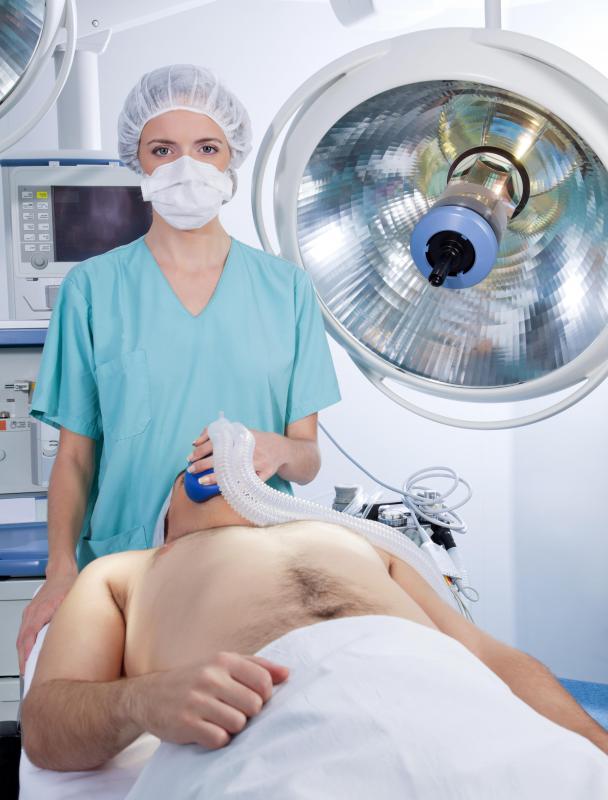At WiseGEEK, we're committed to delivering accurate, trustworthy information. Our expert-authored content is rigorously fact-checked and sourced from credible authorities. Discover how we uphold the highest standards in providing you with reliable knowledge.
What is a Discectomy with Fusion?
Discectomy with fusion is a spinal surgery used to treat ruptured discs, especially if they are impinging on nerves and creating referred pain in the arms or legs. It is comprised of two steps: the affected discs are removed and bone grafts are placed in the empty spaces the discs once occupied to cause bone fusion, which doesn’t always occur. When the area of bone is fused, that area of the spine won’t move freely. Due to this, the surgery is usually not performed on more than three levels of the vertebrae. The surgery may also be done on the lumbar (back) or cervical (neck) spine.
There are other names for this procedure. When performed on the neck it may be either called an anterior cervical discectomy with fusion (ACDF), which means access to the spine is through the throat, or it can be posterior, where access is through the back of the neck. ACDF tends to be more common because it tends to involve less post-operative pain. A lumbar discectomy and fusion may have a posterior or anterior entrance, too. It’s also worth noting that removal of a single disc especially in the lumbar region may not involve fusion.

The goal of discectomy with fusion is to remove discs, free impinged nerves, and establish a bony growth in between the two or more vertebrae from which the discs were removed. This surgery takes about one to two hours per level of spine, if not more, and it may require additional operative procedures while the patient is under general anesthesia. For instance, surgeons may use bone from cadavers or they may use the patient’s own bone. The second procedure is more extensive, requiring bone removal, usually from the hip. The reason it may be worth it to undergo this extra bone removal is because the patient’s own bone has a slightly greater chance of fusing, but the bone removal creates another area of pain that can take months to fully heal.

Surgeons also typically use instrumentation to create stability in the spine when they remove discs. From an x-ray, this essentially looks like plates and screws along the spine where the procedure was performed. Using instrumentation is fairly new, and there may be different types available.
Once surgery is completed, and depending on its complexity, time spent in the hospital can vary. A four to five day stay isn’t unusual, and some patients may go home after two to three days. Recovery after hospitalization lasts a long time, and most people are unable to participate in most daily activities or do basic household chores for approximately six weeks.

Depending on where the discectomy with fusion is performed, patients may also need to wear a brace to stabilize the area after surgery. For example, patients with cervical discectomy with fusion usually must wear a hard collar neck brace for about six weeks after the surgery. They then must undergo several weeks of physical therapy to help increase range of motion.

The disadvantages of any form of discectomy with fusion include that it does result in loss of motion. It can also create instability in the surrounding discs, which might ultimately also herniate and need to be removed. Nevertheless, the surgery is common and neurosurgeons or orthopedic surgeons perform them regularly. An alternative that is presently not approved by many insurance companies is total disc replacement. If insurance companies later approve this surgery, it might ultimately reduce discectomy and fusion surgeries.
AS FEATURED ON:
AS FEATURED ON:

















Discuss this Article
Post your comments